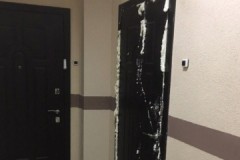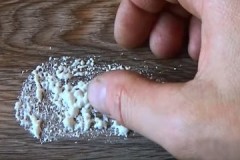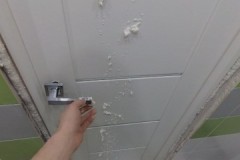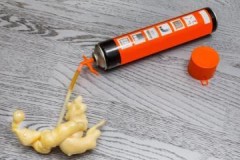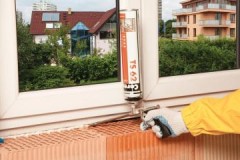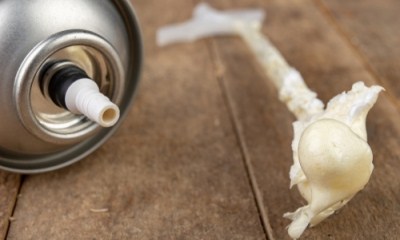 Polyurethane foam is widely used during construction work, when installing doors, windows and more. In addition to its positive characteristics, this material is highly durable.
Polyurethane foam is widely used during construction work, when installing doors, windows and more. In addition to its positive characteristics, this material is highly durable.
After a short time, it firmly adheres to the surface, which is why it is problematic to remove it. This becomes a real problem when the material gets on products that should not be on it.
Read about how you can remove foam at home from laminate, wallpaper, cars, leather, fabric and other surfaces in the article.
Content
How to remove fresh?
It is not difficult to remove fresh polyurethane foam, since it has not yet had time to firmly adhere to the surface. The main thing is to take action as quickly as possible. This rule is true for any material. First aid funds:
-
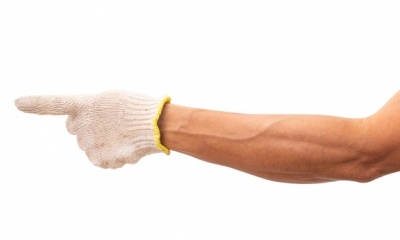 Nail polish remover... Its effect is due to the presence of a small amount of acetone in the composition.
Nail polish remover... Its effect is due to the presence of a small amount of acetone in the composition.Acting as a solvent, it breaks down the molecules of the polyurethane foam, making it easy to remove.
- Spatula and clean paper napkin... Foam that has got on a hard surface is removed with a construction spatula, and its remains are removed with a dry napkin.
- Vegetable oil... They moisten a cotton pad or a small rag with which they wipe the problem area. When the stain is removed, the surface can be rinsed with clean warm water.
- Vinegar. Essence is used to cleanse the product. Soak it with a rag and wipe the stain until it disappears completely.
How can you clean dry with improvised means?
An effective handy tool for removing polyurethane foam is Dimexide. It can often be found in the home medicine cabinet. This drug is used as an analgesic, it has antimicrobial and anti-inflammatory properties. For treatment, it is used only locally and in a diluted form, and a concentrate is required to remove the foam.
Procedure:
- the excess sealant is removed with a sharp object: a knife or a spatula;
- the sponge is impregnated with Dimexide;
- with its help, gently wipe the surface of the product;
- when the foam is soft, brush it off with a stiff but non-metallic bristle brush.
In addition to Dimexide, the dried composition can be removed with acetone, white spirit or solvent. However, these substances cannot be used on all surfaces. How to remove dried foam, you can find out here.
How to remove with special compounds?
There are compounds on sale with which you can safely and effectively remove polyurethane foam. They can be purchased from hardware stores or ordered from the Internet market. Top 3 best remedies:
Tytan Eco cleaner
Remover for fresh foam from various surfaces... The basis of the cleaning composition is solvents. The liquid can be used to treat clothing, glass, plastic and metal products. Price for 500 ml - 450 rubles.
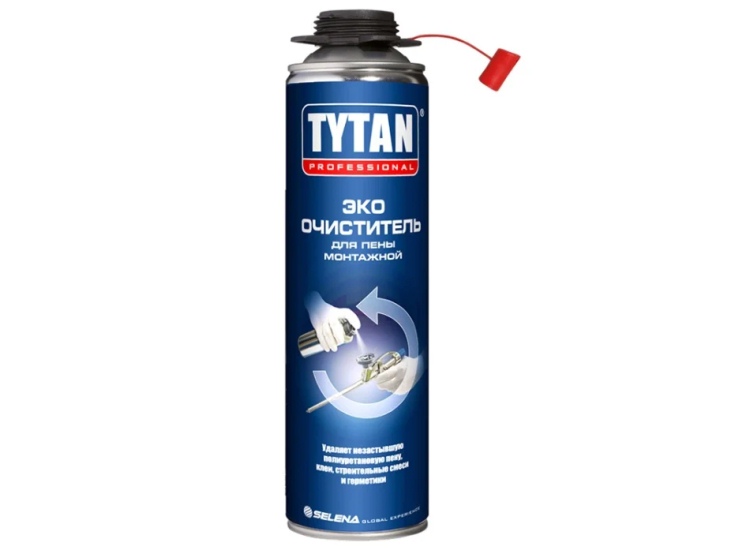
Hauser
The universal composition is intended for the treatment of surfaces from different materials. Price for 360 g - 300 rubles.
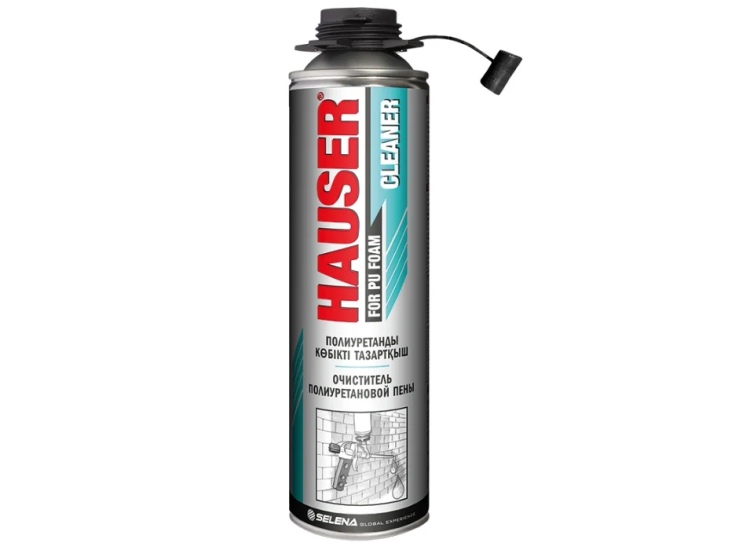
Features of removal from different surfaces
Depending on the surface on which the polyurethane foam has fallen, the compositions for its removal will differ.
With laminate
Laminate does not tolerate contact with aggressive substances and solid objects... The thinner its decorative coating, the higher the risk of spoiling it.
To safely remove polyurethane foam from the laminate, use refined gasoline.
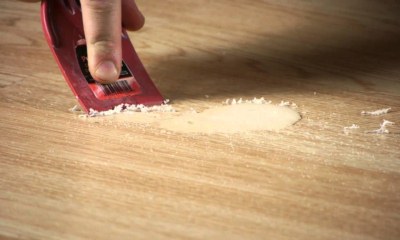 Procedure:
Procedure:
- Remove excess sealant with a spatula. Care must be taken not to scratch the floor covering.
- Moisten a clean cloth liberally with gasoline. Better to use a lighter refill.
- Treat the stain with it. It is removed from the edge to the center.
When the foam is cleaned off, the floor is washed with soapy water and then with plain water. Before proceeding with the procedure, the composition must be tested in an inconspicuous area. Do not use solvents as they will discolor the coating.
From the skin
The most affordable tool for removing polyurethane foam from skin is vegetable oil. It is safe to use and always at hand.
Procedure:
- apply any vegetable oil to a cotton pad;
- wipe the stain with it;
- leave for 5 minutes;
- wash off with warm water and soap.
With plastic
You can wipe the hardened foam off the plastic mechanically. To do this, use a spatula. They pry the hardened composition at the very base and tear it off with a sharp movement.
If a stain remains on the surface after mechanical cleaning, it is cleaned with acetic acid. It is not recommended to use solvents for plastic processing. When the sealant is fresh, clean it off with table vinegar. The dried composition is fought with the help of essence.
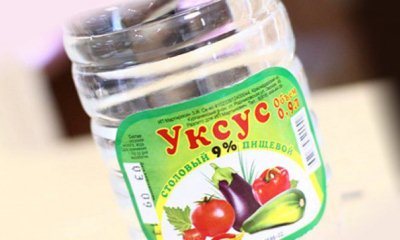 Mode of application:
Mode of application:
- Apply vinegar to a sponge. You need to moisten it abundantly.
- The problem area is being processed.
- Leave for 15-30 minutes.
- Wash off the foam with clean water.
If the building material is difficult to come off, use a brush.
From the car
If polyurethane foam gets on the car body, you do not need to rub it with water or a rag. As a result of such actions, it will simply be smeared over the surface. Also, you should not take risks and use aggressive substances: solvents and strong acids.
It is recommended to get rid of stains with the help of special cleaners.... They dissolve the foam, impairing its adhesion to the surface. When choosing a composition, you need to make sure that it is suitable for the care of painted metal products.
If the body is not completely cleaned the first time, do not use abrasives or sharp objects. Repeat the gentle treatment with a professional cleaner. In 2-3 approaches, it will be possible to clean the car and not damage it.
With fabric
If foam gets on the T-shirt, it will not be possible to remove the stain with a regular wash. White fabric is processed as follows:
- clean off excess sealant with the blunt side of a knife or carefully cut with scissors;
- apply a nail polish remover to a cotton pad and apply it to the fabric in the form of a compress for 10 minutes;
- clean the stain with an old toothbrush - if it was not possible to completely remove it, the cotton pad is left for another 10 minutes;
- brush the T-shirt again and wash it as usual.
From wallpaper
It is not recommended to treat wallpaper with solvent or other corrosive substances. It is better to use a mechanical method to clean them.
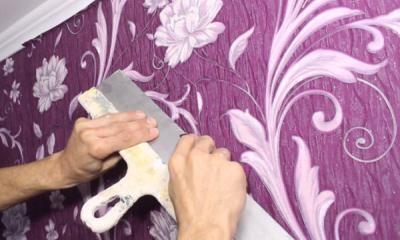 Algorithm of actions:
Algorithm of actions:
- Excess foam is removed with a plastic spatula. You need to act carefully so as not to snag the paper.
- The remnants of the product are cleaned off with a damp toothbrush.
- When the wallpaper is dry, you can go over it with a school eraser. This is done for final cleaning, when a small trace of foam remains.
If, after mechanical cleaning, the stain has not disappeared, they are passed over it with a cotton pad dipped in vinegar.
From a wooden floor
If the wood is not varnished, it can be mechanically cleaned of the sealant. For this purpose, use spatulas (wooden or plastic) or a not too sharp knife. You can use a solvent. White spirit gives a good effect... It does not harm the tree and quickly copes with frozen foam.
Lacquered wood is treated with Dimexidum. They wipe the surface with it for 2-5 minutes, depending on the degree of contamination.
From linoleum
You can get rid of stains on linoleum with the help of such means as:
- shop cleaner with weak solvents;
- vegetable oil;
- vinegar.
Acetone and other solvents should not be used to clean linoleum, as they leave behind matte stains. Read more here.
From the door
The composition is removed from the door in different ways... The choice of the best tool depends on the material from which the canvas is made:
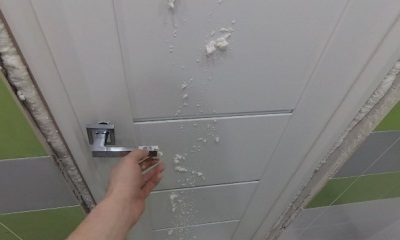 The iron door is cleaned with a solvent.
The iron door is cleaned with a solvent.- Laminated doors are treated with fat-containing compounds, for example, vegetable oil.
- The painted surface is cleaned with vinegar.
- It is better to clean the PVC coating with Dimexide.
- Veneered doors can be treated with a professional cleaner.
How to remove mounting foam from a metal door, read here, with wood, plastic and others - here.
From the windows
You can clean windows from foam using a professional solvent.... These compounds are safe, so they are used on most surfaces. The main disadvantage of such funds is weak action.
If the foam has dried up, the cleaner will not be able to cope with it. From available tools, the choice is made in favor of vegetable oil.
The solidified material is removed with white spirit. It is not recommended to use more aggressive solvents, as they can damage the window. He will tell you about the removal of polyurethane foam from plastic windows this publication.
What shouldn't be done and why?
When removing sealant from various surfaces, the following recommendations must not be violated:
- The foam must not be smeared over the surface. The material is removed with sharp movements.
- Do not try to wash off fresh foam with water. It only enhances the adhesion of the sealant to the surface.
- Painted products should not be treated with acetone or strong solvent based products.
- Do not remove stains with sharp objects that can scratch the product.
- It is undesirable to use metal brushes and scrapers that can scratch the surface.
Helpful information
 Tips for removing polyurethane foam from various materials:
Tips for removing polyurethane foam from various materials:
- if the sealant lies on the surface with a tubercle, it must be cut off and only after that you can proceed to the main cleaning;
- before using aggressive compounds, they must be tested in an inconspicuous area;
- to remove foam, it is better to use fluffy brushes rather than rags - this will allow you to clean the building material, and not roll it up.
Conclusion
You can get rid of polyurethane foam with the help of improvised means and store formulations. The choice of active substance depends on which surface the sealant has got on and how long it has been on it.
